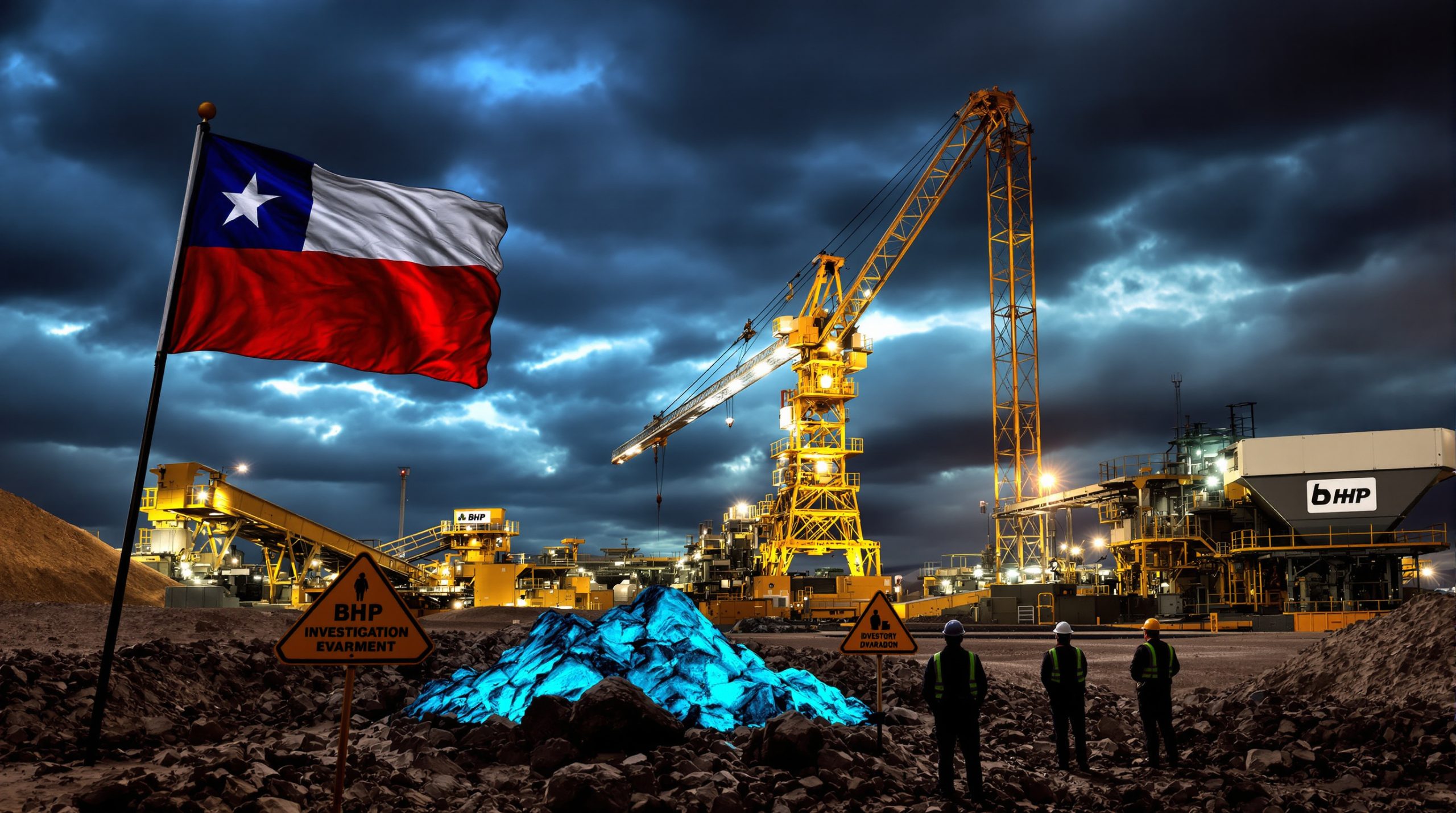How is the Ukraine-US Minerals Deal Structured?
Key Framework Elements
The Ukraine-US minerals agreement, signed in April 2025, establishes a groundbreaking economic partnership that moves beyond traditional aid relationships. The deal creates a jointly-managed Reconstruction Investment Fund with a 50/50 revenue split structure from new Ukrainian mineral extraction projects. This innovative arrangement allows Ukraine to leverage its natural resource potential while securing continued US financial support for both economic recovery and defense needs.
Revenue Allocation Mechanism
Under the agreement, half of all government revenues generated from new mineral extraction activities will flow into the joint investment fund. These revenues include proceeds from licensing, extraction rents, and related income streams. The fund will then direct investments toward three primary sectors: mineral development, energy infrastructure, and critical rebuilding projects.
Timeline and Implementation Goals
Ukrainian Economy Minister Oleksiy Sobolev has announced an ambitious implementation schedule, with plans to identify three pilot investment projects within the next 18 months. The agreement has already progressed to the active site assessment phase, with joint Ukrainian-US teams currently conducting field evaluations to develop an investment pipeline.
What Strategic Minerals Does Ukraine Possess?
Critical Mineral Deposits
Ukraine holds significant deposits of 22 of the 34 minerals classified as critical by the European Union. These resources position Ukraine as a potentially vital supplier in global supply chains for defense technologies, high-tech manufacturing, and renewable energy development. The critical minerals energy transition is driving increased demand for these resources worldwide. The country's mineral portfolio includes:
- Titanium deposits (essential for aerospace and medical applications)
- Graphite reserves (crucial for battery production)
- Lithium resources (vital for energy storage systems)
- Beryllium (used in telecommunications and aerospace)
- Rare earth elements (critical for electronics and defense systems)
Industrial Metals and Materials
Beyond critical minerals, Ukraine possesses substantial deposits of:
- Ferro alloys (essential for steel production)
- Non-ferrous metals (used extensively in construction)
- Precious metals (including gold and silver)
Geographical Distribution
Many of these mineral deposits are located throughout Ukraine's diverse geological regions, though some promising areas remain in contested territories, creating additional complexity for development projects.
What Are the Economic Benefits for Both Nations?
Ukraine's Economic Recovery Potential
For Ukraine, the minerals deal represents a crucial pathway to economic revitalization after years of war-related devastation. The agreement provides:
- Access to US investment capital for infrastructure rebuilding
- Technical expertise for mineral sector modernization
- Potential for job creation in mining and processing industries
- Diversification of the economy beyond traditional agricultural exports
US Strategic Advantages
From the US perspective, the agreement delivers several key benefits:
- Preferential access to critical minerals needed for advanced manufacturing
- Reduced dependency on Chinese-controlled supply chains
- Potential investment returns through the joint fund structure
- Strengthened geopolitical influence in Eastern Europe
Mutual Financial Framework
The deal's structure as an investment partnership rather than direct aid creates a more sustainable long-term relationship. By establishing a joint fund with shared governance, both nations have aligned incentives for successful project development. Recent gold prices analysis shows how such resource partnerships can benefit from commodity market strength.
How Does the Deal Impact International Relations?
Shifting US-Ukraine Dynamics
This minerals agreement represents a significant evolution in US-Ukraine relations. It transforms what was primarily a military aid relationship into a more comprehensive economic partnership with mutual benefits. The deal reflects President Trump's "America First" approach to foreign policy, emphasizing tangible returns on US international engagement.
European Energy Security Implications
Ukraine's development of critical mineral resources could strengthen European energy security by:
- Supporting the EU's green transition with essential battery materials
- Reducing collective dependence on Russian resources
- Creating new supply chain options for European manufacturers
Global Supply Chain Considerations
The agreement positions Ukraine as a potential alternative source for critical minerals currently dominated by a few major producers:
- Lithium (currently concentrated in Australia, Chile, and China)
- Titanium (where Russia has been a major supplier)
- Rare earth elements (predominantly controlled by China)
The ongoing development of lithium industry innovations in countries like Australia provides both competition and complementary expertise for Ukraine's emerging sector.
What Challenges Face the Partnership Implementation?
Security Concerns
The ongoing conflict with Russia creates significant implementation challenges:
- Mineral deposits in contested areas remain inaccessible
- Infrastructure development faces potential military threats
- Investor confidence requires security guarantees
Investment Timeline Realities
While the agreement establishes a framework, practical challenges include:
- Long development cycles for mining projects (typically 5-10 years)
- Significant capital requirements for infrastructure rehabilitation
- Technical complexities of mineral extraction and processing
Regulatory and Governance Factors
Successful implementation will require:
- Transparent licensing procedures
- Environmental safeguards that meet international standards
- Clear dispute resolution mechanisms
- Stable regulatory frameworks to attract additional investors
How Will Investment Projects Be Selected?
Site Assessment Process
The current phase involves comprehensive evaluation of potential project sites by joint Ukrainian-US teams. These assessments consider:
- Geological data on mineral quality and quantity
- Infrastructure access and requirements
- Security situation and stability factors
- Environmental considerations
- Community impact and social license
Investment Criteria
Project selection will prioritize opportunities that:
- Offer near-term production potential
- Align with critical supply chain needs
- Provide significant economic multiplier effects
- Balance mineral sector development with broader infrastructure needs
US Development Finance Corporation Role
The US International Development Finance Corporation (DFC) is playing a central role in the site evaluation process, bringing expertise in:
- Project finance structuring
- Risk assessment methodologies
- International development best practices
- Public-private partnership models
What Economic Indicators Will Measure Success?
Short-Term Metrics
Initial success indicators will include:
- Number of viable projects identified
- Total investment commitments secured
- Timeline to first production
- Job creation figures
Long-Term Performance Measures
The partnership's ultimate success will be evaluated through:
- Annual mineral production volumes
- Revenue generation for the joint fund
- Infrastructure improvement metrics
- Economic diversification indicators
- Supply chain resilience improvements
Investment Return Expectations
While specific financial targets haven't been publicly disclosed, the partnership aims to:
- Generate sustainable returns for both countries
- Create a self-reinforcing cycle of investment and development
- Establish commercially viable operations that attract additional private capital
How Does This Compare to Other International Resource Agreements?
Novel Partnership Structure
The Ukraine-US minerals deal represents an innovative approach to international resource development:
- It differs from traditional extractive industry models by emphasizing joint investment rather than simple resource access
- Unlike conventional aid relationships, it establishes mutual economic interests
- The agreement creates a framework for technology transfer alongside resource development
Comparison with Chinese Resource Agreements
The partnership offers a distinct alternative to China's resource diplomacy:
- Emphasizes transparent governance rather than debt-based financing
- Focuses on mutual benefit rather than resource-for-infrastructure swaps
- Includes technical assistance components beyond simple extraction rights
Precedent for Future Arrangements
If successful, this model could influence future international resource agreements:
- Creating templates for developed-developing country partnerships
- Establishing frameworks for post-conflict economic recovery
- Demonstrating alternatives to traditional resource extraction models
What Are the Next Steps in Implementation?
Immediate Action Items
The partnership is moving forward with:
- Completion of initial site assessments
- Identification of three pilot projects by Q2 2026
- Development of detailed feasibility studies
- Establishment of fund governance structures
Medium-Term Development Timeline
Over the next 2-3 years, the partnership aims to:
- Secure additional investment partners
- Begin infrastructure development for priority projects
- Establish processing capabilities for extracted minerals
- Create training programs for workforce development
Long-Range Strategic Vision
The ultimate goals include:
- Establishing Ukraine as a reliable supplier of critical minerals
- Creating a self-sustaining economic development model
- Rebuilding critical infrastructure throughout the country
- Developing value-added processing capabilities beyond raw material extraction
The agreement builds upon previous US policy initiatives, including Trump's critical minerals order which prioritized securing supply chains for strategic resources. In Europe, the establishment of a raw materials supply facility provides a complementary framework for securing critical minerals.
Frequently Asked Questions About the Ukraine-US Minerals Deal
Will this agreement affect existing Ukrainian mining operations?
No, the agreement specifically targets new mineral extraction projects rather than existing operations. Current mining activities continue under their established frameworks, as explained by the Center for Strategic and International Studies.
How will environmental concerns be addressed?
Projects developed under this partnership will need to meet international environmental standards and undergo appropriate impact assessments before approval.
Can other countries join this partnership?
While the core agreement is bilateral, both Ukraine and the US have indicated openness to additional partners for specific projects, particularly from European allies with complementary needs and capabilities.
How does the ongoing conflict affect implementation?
Security considerations remain paramount, with initial projects likely focused in western and central regions of Ukraine where stability is greater. The partnership includes provisions for adapting to changing security conditions, according to Reuters reporting.
What happens if mineral prices decline significantly?
The agreement includes provisions for market fluctuations, with the joint fund structured to manage commodity price volatility through diversified investments across multiple sectors.
Want to Capitalise on Major Mineral Discoveries?
Don't miss out on the next significant mineral discovery opportunity. Discover how you can receive real-time alerts on ASX mineral announcements powered by the proprietary Discovery IQ model by visiting Discovery Alert's dedicated discoveries page today.




